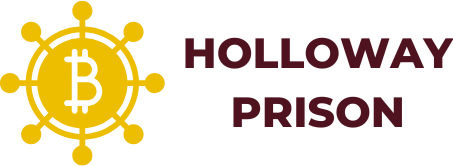In today’s fast-paced world, staying productive can feel like herding cats—chaotic and nearly impossible. But fear not! The right team productivity app can transform that chaos into a well-oiled machine. Imagine a tool that not only keeps everyone on the same page but also makes collaboration as easy as pie.
Table of Contents
ToggleOverview of Team Productivity Apps
Team productivity apps enhance collaboration and streamline tasks. Various features within these apps aid in communication, project management, and file sharing. Popular functionalities include task assignments, deadlines, and progress tracking.
Apps like Trello allow teams to visualize projects through boards and cards. Asana provides detailed task lists, enabling clear responsibility assignment. Monday.com offers customization options, which help teams tailor workflows to specific needs.
Integration with other tools amplifies functionality. For example, many productivity apps connect with Google Drive, Slack, and Zoom. Such integrations simplify file sharing and real-time communication, keeping everything in one place.
Security features are crucial for sensitive information. Most productivity apps implement encryption and user permissions to protect data. Companies often choose apps that comply with regulations, ensuring data privacy.
Different team sizes benefit from various apps. Small teams often favor simple, user-friendly interfaces, while larger organizations require more robust features. Evaluating specific needs can lead to selecting the right tool for any team.
User reviews and ratings provide insight into app effectiveness. Testing several options through free trials allows users to assess functionality firsthand. Feedback from team members can influence app selection, ensuring a consensus on the best fit.
Criteria for Selecting the Best Team Productivity App
Selecting the right team productivity app requires careful consideration of several key factors. Evaluating these criteria ensures the app meets the specific needs of the team.
User Interface and Experience
User interface affects how quickly team members adapt to the app. An intuitive design encourages engagement and minimizes training time. Clear navigation and user-friendly layouts support efficient task management. Customization options allow teams to tailor the interface to their preferences. Visually appealing dashboards enhance user experience and keep team members motivated.
Features and Functionality
Features and functionality determine the app’s capacity to support various workflows. Essential elements include task assignment, progress tracking, and deadlines. Collaboration tools such as comments and file attachments simplify communication. Automation capabilities can streamline repetitive tasks, increasing overall productivity. Built-in templates may assist teams in launching projects swiftly.
Integration with Other Tools
Integration with existing tools enhances the app’s usefulness. Seamless connections to platforms like Google Drive, Slack, and Zoom facilitate smooth workflows. Teams benefit from automated updates and real-time collaboration across multiple tools. Ensuring the app supports APIs can improve customization and compatibility with other software. An efficient integration process minimizes disruption and enhances overall team productivity.
Top 5 Best Team Productivity Apps
Choosing the right team productivity app can significantly impact collaboration and efficiency. Here are the top five apps that stand out in terms of features and benefits.
App 1: Trello – Features and Benefits
Trello offers a visual approach to project management using boards, lists, and cards. Team members can easily organize tasks and track progress. Customizable workflows enhance adaptability, catering to various project types. Integrations with tools like Google Drive and Slack allow seamless collaboration. Users appreciate its user-friendly interface, making onboarding quick for new team members.
App 2: Asana – Features and Benefits
Asana excels in task assignment and progress tracking, enabling teams to break projects into manageable pieces. Notifications keep team members updated on project changes. It supports timeline views and calendars for better scheduling and workload visibility. Custom fields allow teams to tailor the app to their specific needs. Security features, such as data encryption and user permissions, protect sensitive project information.
App 3: Monday.com – Features and Benefits
Monday.com stands out with its highly customizable dashboards, offering insights into team performance. Teams can create their own workflows and monitor progress with visual data representation. Communication tools within the app enable team discussions without switching platforms. Many users find the analytics tools valuable for understanding project timelines. Integration options across various applications provide flexibility in managing resources.
App 4: ClickUp – Features and Benefits
ClickUp combines task management with goal tracking, providing a holistic view of performance. Its versatile interface allows customization of views based on team preferences. Features like time tracking and reporting enhance accountability among team members. This app also integrates well with numerous other tools, facilitating smooth processes. Teams can leverage its templates for quick task setup, saving valuable time.
App 5: Wrike – Features and Benefits
Wrike is designed for collaborative projects, equipped with real-time editing and file sharing capabilities. Task dependencies ensure that teams stay aligned as projects progress. Its Gantt chart feature offers clear visual timelines and resource allocation. Customizable reports provide insights into team efficiency and project status. Wrike’s robust security measures ensure data safety, making it ideal for larger organizations.
Comparison of the Best Team Productivity Apps
Evaluating team productivity apps reveals notable differences in features and user experience. Trello excels in visual project management, offering clear boards that simplify task tracking. Asana prioritizes task assignment with a user-friendly interface, helping teams stay organized. Monday.com provides customizable dashboards, allowing teams to tailor the workflow to their specific needs.
ClickUp combines task management and goal tracking, providing a comprehensive solution for productivity. Wrike stands out with its strong collaborative features and enhanced security measures, making it ideal for teams handling sensitive information.
Feature comparisons can guide selections. For instance, teams that value visual organization may prefer Trello, while those needing robust task assignment might favor Asana. Customization plays a crucial role in Monday.com’s appeal, especially for teams seeking personalized workflows.
Integration capabilities also vary. ClickUp integrates seamlessly with existing tools like Google Drive and Slack, promoting easier file sharing and communication. Wrike’s collaboration features further enhance team dynamics, supporting remote and in-office work situations.
Pricing structures differ as well. Trello offers a free version suitable for small teams, while ClickUp provides tiered pricing that accommodates larger organizations. Asana’s user limit on the free plan may require consideration for growing teams.
User feedback provides insight into app performance. Positive reviews often highlight user experience, while drawbacks focus on learning curves associated with more complex applications. Testing options through free trials proves beneficial to ensure compatibility with team workflows.
Selecting the right team productivity app can significantly enhance collaboration and efficiency within any organization. By understanding the unique features and functionalities of each option available, teams can make informed choices that align with their specific needs. Emphasizing integration capabilities and user experience ensures smooth adoption and maximizes productivity.
The variety of apps like Trello, Asana, Monday.com, ClickUp, and Wrike cater to different team sizes and workflows. Each offers distinct advantages that can transform chaotic work processes into streamlined operations. Testing apps through free trials and considering user feedback will help teams find the perfect fit for their workflows. Ultimately, investing time in selecting the right tool will lead to improved teamwork and greater overall success.





